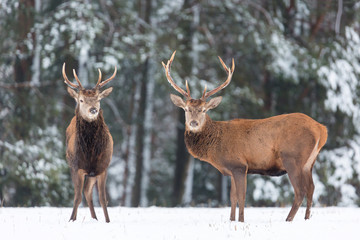The deer tail is the most straightforward part of deer to preserve for future use. It is less prone to decomposition than other body parts because it lacks flesh and organisms. However, knowing how to preserve a deer’s tail is important.
The preservation of deer tails does not necessitate much knowledge or equipment. Without cold rooms or preservative chemicals, you could easily store deer tails for an extended period.
The end-user determines the mode of preservation to use on deer tails.
If you’re reading this, you’re probably a deer hunter or a beer enthusiast, and you’re already familiar with ways to collect these tails from various sources. So, I’ll give you a step-by-step guide on how to preserve a deer tail for food or other purposes.
Steps
Skinning and Cutting
The first step on how to preserve a deer’s tail is to separate it from the rest of the body. You could use a knife or any sharp instrument to make a clean cut. Make sure that no flesh remains, turning the tail into a habitat for organisms that cause decomposition.
Washing
Wash the deer tail thoroughly in warm water with mild soap. This washing is intended to keep the hair in good condition. There would certainly be some blood left over from the incision; the soap would also remove any unpleasant odors and oddities.
However, it would be best if you did not leave it in the water for an extended period.
Salting
You have two options when it comes to salting deer tails. You either salt them dry, or you salt them wet. Also, if you accidentally leave some flesh on the deer, the salt prevents bacteria from the meat from contaminating the hair.
However, it is best if you scrape off any remaining flesh. Flies are also deterred by the presence of salt on the hair. Regardless, you should not keep the salt on your hair for more than 8 hours; you risk damaging it.
Freezing
You may freeze your deer tail at the start of the hunting season and add to it as you acquire new tails. As long as the conditions are good, the tails will remain pristine.
Avoid repeatedly upsetting the temperatures. Also, the hair must be dehydrated before being inserted into the freezer
Coat With Borax
If you’re freezing the deer tail, you won’t need to coat it with Borax. Borax is available in liquid or powdered form, and either is ideal.
To begin this operation, turn the tail so that the hair is facing downward. Then, cover the plain flesh of the tail thoroughly. Borax is used chiefly to tan tail skins.
You can add additional salt at this stage if you like. Additionally, ensure that the tail is absolutely devoid of flesh.
Borax can be left on the path for days if the room is kept dry and aerated. After that, scrape the paste off the tail and rewash with warm water and mild soap.
After that, the tails can be dried. The drying time could range from three to seven days. After that, your tail will be clean and ready to use.
Deer Tail Uses
Because deer hair is not edible, the tail is saved for other use while the rest of the deer is packed for food.
Surprisingly, the deer tail is incredibly useful in a variety of situations. Listed below are a handful of these applications:
Tying flies
Deer hair is somewhat soft, yet it is very robust. As a result, they can be utilized to build a fly there, which is quite helpful for fly-fishing. However, tying flies made of deer hair requires patience and craft, so, most people just buy an already-made one from the stores.
Paint Brushes
Local painters and artists turn deer hair into traditional paintbrushes. Because deer hair does not repel colors, it can be used with watercolors, inks, and a few other mediums. They are also capable of holding water.
Clothing
Due to the delicate quality of deer hair, it can be further processed to form many types of clothing accessories. For example, sweatshirts and hoodies are popular apparel items. Before you make these hairs into clothing, you must ensure that they are free of flesh.
You can use these hairs to manufacture purses and bags in addition to garments.
Clothes manufactured from foot hair, on the other hand, are not very prevalent. If the production of deer hair clothing increases, we may have a deer endangerment problem on our hands.
Costumes
Before a deer tail can be used as a costume, it must be thoroughly cleansed. It also depends on the type of outfit being created. Some of the fluffy costumes you’ve seen or maybe used are made from actual deer tails, which may surprise you. These tails are processed in some regions of Africa into a royal staff, which some dancers use during performances.
Final Takes
Every hunter should know how to preserve a deer’s tail. These tails have a variety of applications, and because they cannot be used while still attached to a living animal, they must go through several processes so they can be used.
Deer hair preservation is a simple method; simply cut, clean out, dry, wipe with Borax, and dry again. Voila, your dry deer hair is ready for use.





